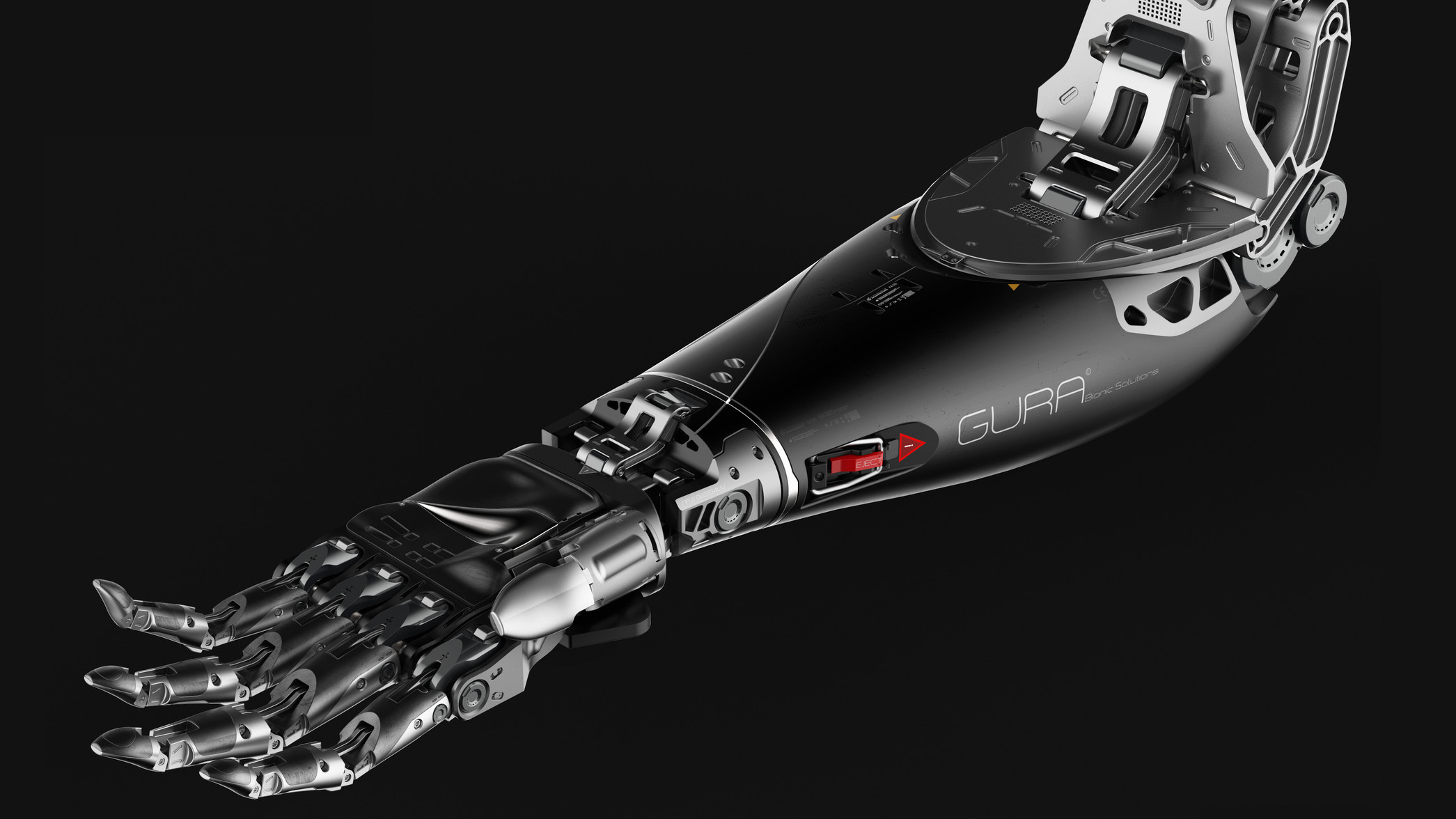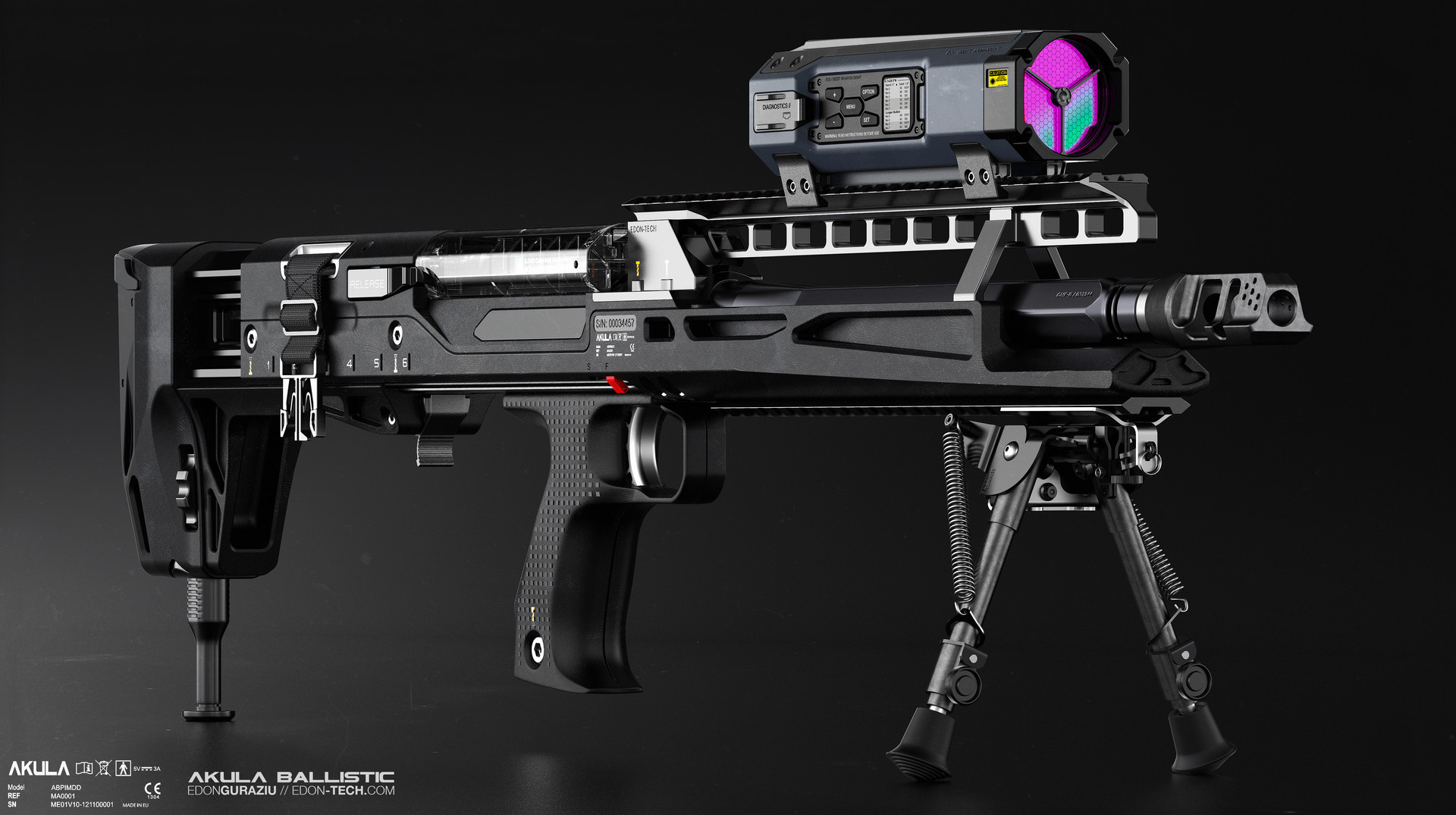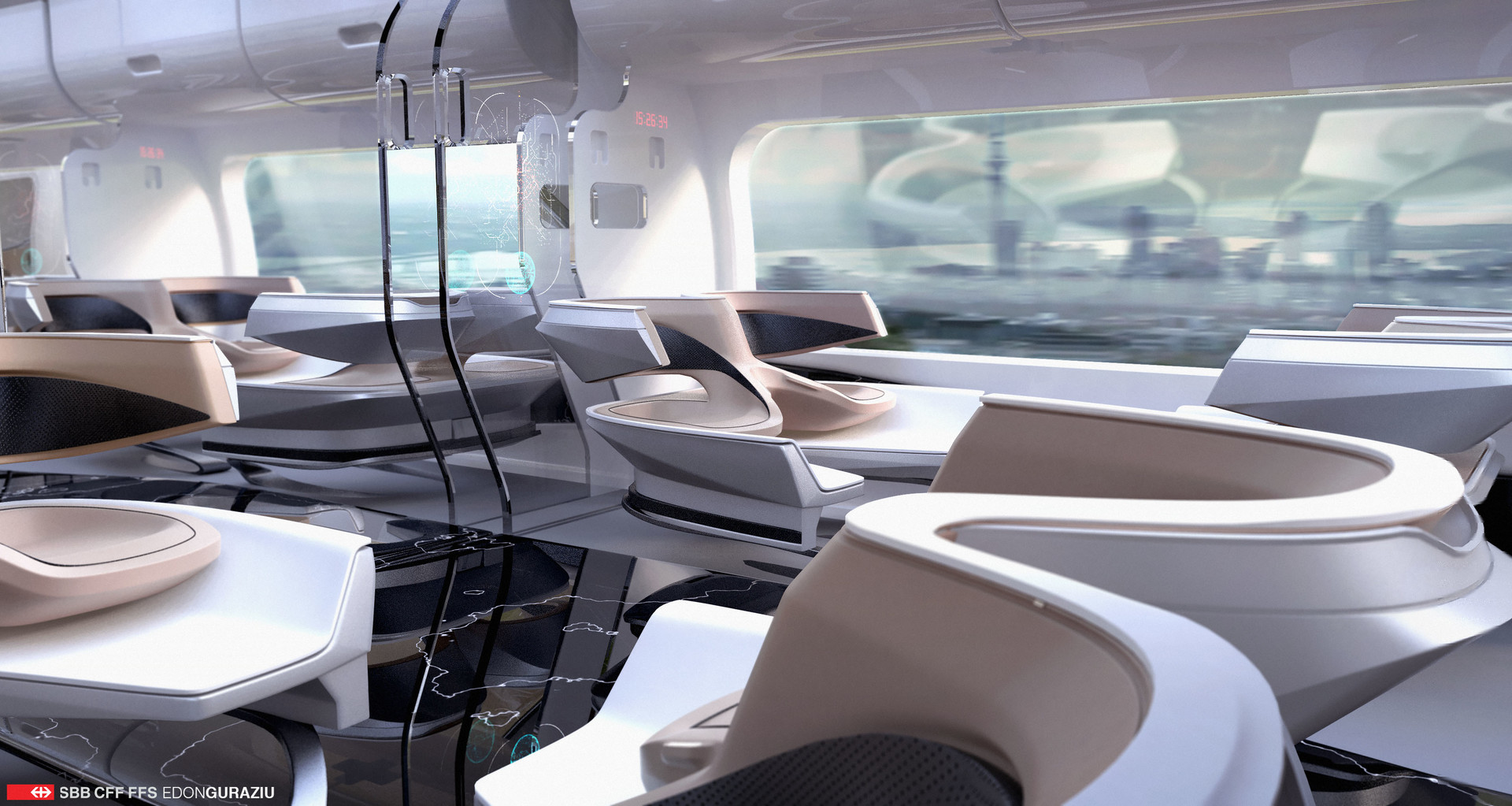Edon Guraziu is a Concept Designer from The Netherlands who knew where his passions were and made the jump into film and entertainment industry many only think about doing. With a drive to learn and turning his inspiration into incredible work of robotic, firearm, environment and product design, he has had the opportunity to work in some of the greatest titles of film and game. KeyShot is an important component in his toolkit for its real-time speed and material capability. We asked him more about how he started, what inspires him and how KeyShot makes all the difference.
Edon Guraziu / Concept Designer
Modeling software used: MoI3D / Maya / ZBrush / Marvelous Designer
Website: edon-tech.com
What sparked your interest in becoming a Concept Designer?
I was always a creative kid. My dad was also a really good artist. He would encourage me to draw and paint and he’d show me his art books for me to draw inspiration from. I remember when my dad took me to watch Spiderman 2 at the cinema. I was 8 years old. Watching Spiderman fly through the sky defeating Dr. Octavius with his octopus-like robotic tentacle arms gave me my first nerdgasm. Since then I had a deep curiosity about how films where made. I would watch behind the scenes footage to figure out how they would achieve special effects, costumes, etc. I tried to make my own Spiderman mask, constructing the lenses from old sunglasses, cutting them into shape. I would take an old red-colored shirt and cut out two profiles of my head, stitch them together and form the mask. The webbing was too complex so I did it with black marker–I would practice countless times on paper to make sure the web pattern would be perfect. This is just a small story I use as an example but this passion and curiosity for things are ultimately what drove me to do what I do today.
 What was the turning point in your career?
What was the turning point in your career?
Dropping out of college to get a job in this field was definitely a jump in the deep end. No diploma, bills to pay and people around who didn’t necessarily support my commitment to fulfill my passion my own way. It was a huge weight on my shoulders but at the same time such an epic challenge to overcome and give the naysayers the finger. I started working on my portfolio from June through December. Right before the new year, I was offered a full-time job at a AAA studio. I think that was a highlight. Right now, I’m obviously very grateful and lucky to work on some really cool projects. So as long as the next project is bigger, more complex and more challenging, it is a highlight in my book!
What inspired this and how do you approach a project?
In my youth, I was a big sucker for fantasy such as Lord of the Rings, Warhammer Online, and more. I still love it today but somehow my passion and love shifted to advanced/sci-fi design. I feel the most progress and innovation happens here and the sense of constant progress, whether it is in terms of technology, materials, or manufacturing techniques, just makes me feel so inspired to come up with new ideas and push ideas further. One of my favorite subjects is industrial: weapons, interior/environment design, products, and robotics. There is just something about robotics for example that appeals to me so much. When I design a robotic arm or prosthetic, the challenge to make proportions work, details, human anatomy translation to mechanical and more primitive solutions is so rewarding when it works out.
What is your primary 3D modeling software?
I use MoI3D and Maya mostly. For anything requiring a realistic aesthetic (like a complex geometry that’s been CNC’d out of a billet of steel or aluminium), I use MoI3D because it allows me to apply real-life techniques such a booleans to create unique, complex forms that otherwise require a great deal of effort when using Maya, which is a Poly-based modeling program. For shapes/forms that don’t need this process to create a specific shape, I use Maya to either model using Sub-D mode or bevel and refine manually for a specific look I’m after. For organic shapes and complex geometry manipulation, I use ZBrush, and for cloth simulation, I use Marvelous Designer.
KeyShot is used to finalize a design and bring the level of presentation to the next level. Its extensive material library and tools to make custom ones allows you to quickly apply materials, textures, and labels to check what the product would look like as if they are produced in real life. Fast R&D and prototyping with iterations of the same design allow you to quickly filter out the best results.
What makes KeyShot an important tool to have?
Any rendering program capable of producing photorealistic materials and textures is great to have if you need to present a design it its full potential. Whether it is for a product design that has to wait approval from it’s investors to a design that’s been done for a film waiting to be passed along to the VFX department for reference. KeyShot is probably my favorite since its very simple, intuitive and fast.
 What advice would you give to someone interested in doing what you do?
What advice would you give to someone interested in doing what you do?
If you have a great passion for design and would like to make concepts for the entertainment, film or industrial industry I highly suggest you to find a subject that you really like and excel in that particular field. Try to increase your understanding of things relevant and be inspired by the world. Keep yourself up-to-date on subjects you like and stay engaged to be inspired and get new ideas–These can be across areas like scientific, military, robotics, medical, transportation advancements.
A visual library is key in applying your problem-solving skills to a design task in which you have to solve a set of problems in the most efficient and aesthetically pleasing way. Over time you will create your own style which is defined by your pattern of thinking and proven solutions you like to use in your designs. Once you establish a unique style that is hard to replicate your value as a designer and potential business asset increases dramatically. Most important to understand: this is not a race and everything good takes time. Learn to love the journey, strive for improvement every single time you create something new and push your personal benchmark.












